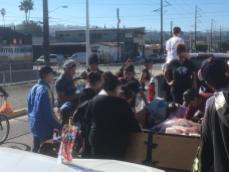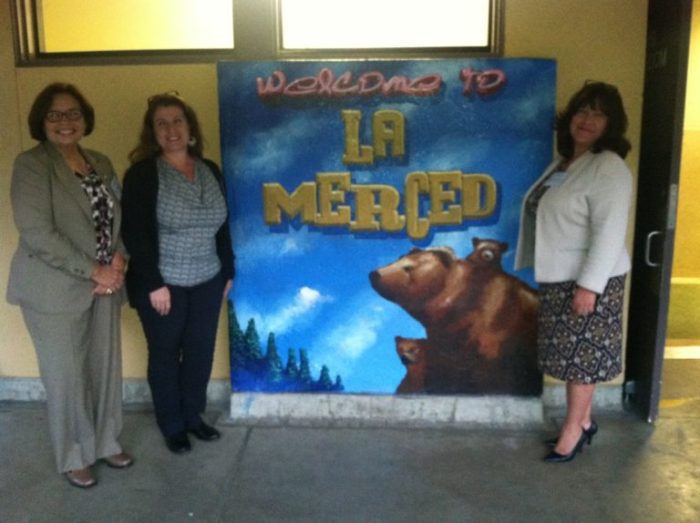
LOS ANGELES–By James Rodriguez Daza, for GYPSET Magazine.
Traversing into the tunnels leading into the Los Angeles metropolitan jungle of Downtown, the streets can be seen filled with the usual rush hour traffic and noise that normally describes a modern cosmopolitan urban center. Pedestrians of professionals, students, merchants, and local inhabitants make their way home as the workday reaches an end while the shadows of skyscrapers and scaffolding cover the urban landscape. As the night descend, a new breed of animal stepped out, the youthful, millennial trendsetters, night owls, and hipsters, to engage the DTLA nightlife. Not long ago, was DTLA dismissed as a commercial hub of one of the largest cities in the US. In fact, Downtown was declining in commerce and residency until a new influx of redevelopment projects was initiated in order to attract new investors and subsequently a new clientele. Now, it has become a leading destination for dining, retail, and entertainment. Among the many new attractive destinations to bless the city, Blue J Bar and Lounge had opened its doors late last year to offer patrons a comfortable, friendly atmosphere where they can enjoy a good drink while listening to Top 40s Hip Hop and House music. In an effort to expand its reach and offer something fresh and exciting, it had recently debut its Tuesday Latin Salsa Nights earlier this March offering salsa dance classes and an evening of sensual, exhilarating Latin music and social dancing.
The Venue
Working as a part of a larger network of restaurants that span from San Jose to San Clemente, which include chains like Backhouse-Yakatori, Blue J Bar and Lounge is located in the heart of Little Tokyo by the famous Little Tokyo Marketplace neighboring the Downtown Arts District. Owner Lee Kahn and partner, Michael Kwon, attracted the attention of private investors particularly from the East who wanted to invest in lucrative restaurants around the Los Angeles area. Kahn and Kwon work as a part of a restaurant design group who specialize in designing a variety of concepts that invite investors to help see these concepts materialize. Blue J was one of such prospects capitalizing on the youthful energy of the Arts District. So far, weekends have proven quite successful when Fridays and Saturdays opened up to DJ Top 40s Hip Hop and House music while Sundays were devoted to catering to members of the entertainment industry brandishing quality, health-inspired food and popular drinks. The venue itself has also opened up to other fan-fare like “open mic” nights, talent shows, birthday parties, and even fundraisers. In fact, Blue J was host to the LAPD’s Pre-Party to their annual Bakersfield-Vegas Race which helped raise $6,500.00.
“It was a great and successful event. We’re looking forward to do more things with law enforcement. We appreciate everything they do for us in DTLA. They provide a safe haven and environment for those who live or come to Downtown,” said Kahn.

Engaging the community, targeting its desires and giving back interestingly has been one of the establishment’s tent pole strategies since opening its doors in September 2016.
“I come from a company that I retired from that was very big at giving back to the community. If there’s any focus going forward, it’s ‘What are we going to do to do more and offer in that respect?’ Support local charities whether it’s YMCA or helping raise money for the homeless. Personally, I want to make a difference and maybe contribute to eliminating homelessness here. It’s my backyard. They’re my neighbors. Whatever I can do to achieve that, we’ll do it…We offer great service, friendly hospitality, good pricing, and value to our customers. We want everybody to feel that they can afford to have a nice and good time. We accommodate. We’re not pretentious. We just want to invite everybody to come out and have a good time and not have any limitations or restrictions. That’s why there’s no cover at the door, and the dress code isn’t pretty strict.”
There’s a certain synergy as Kahn described that helps connect Blue J with the neighboring community that works well with his design group’s network of concepts, and there are many. To name a few, they include EMC Seafood Bar, Spear Steak and Seafood House, Bunker Hill Bar and Grill in the Financial District, 3rd Generation Socket Bar on Century and Flower, and the Chicken Factory near USC. According to Blue J’s Marketing and Public Relations director, Kevin Tren, they’re trying to broaden their reach in the hospitality food industry from many different angles expanding on their varied brands while building new ones. Blue J is a prime example targeting the community catering to its specific needs. Since its location is in the Arts District, as an example, Kevin asked rhetorically, “What better form of marketing your product can you have than targeting the local artists in the area?” So, in a brilliant move, they invited them to display their artwork at the venue which helped develop its unique art décor showcasing the talents of artists like Ace and Jason Lee (aka The Master Artist). If you pay attention as you walk into the bar, you can actually see Ace’s winged mural hanging on the left wall by the entrance inspiring a dream-catcher sensibility. Kevin elaborated,

“We had Daryl Kerry. He’s a photographer and illustrator who regularly display his work. We’ve had a collection of notable artists from the community involved. The series of pieces on the far side of the bar are Mr. Jason Lee’s. We try to feature at least one artist. Give them a couple of months, and then we change it up.”
All of it adds to an ambiance, a vibe that helps bolster the mood setting the right tone to engage patrons and make them feel at home. Aside from the pieces of art and photographs adorning the lounge, dimly-lit Moroccan lamps are added surrounding the whole place while the center bar is lit just right to give it its own distinct stamp in the venue. Similar to La Descarga’s vibe, Blue J is designed to give visitors a taste of exclusivity where only they are in on the “big secret” giving them a sense of feeling vested in the location.
Tuesday Latin Salsa Nights

Now, Kahn wants to expand by including other attractions during the week to attract new customers while retaining the regulars prompting him to not only add live music but also a Latin night in order to spice things up and appeal to many Latin guests who had initially suggested to setup a night exclusively for Latin music. Considering that there are many “hipsters” in the Arts District and most are pretty well-to-do financially yet were craving something extraordinary, Kahn utilized his connections to setup a Tuesday Latin Night run by local Westside dancers, Nicole Gil and Charlie Antillon. An aggressive marketing campaign soon followed to help get the word out utilizing flyer drops, social media invites, email campaigns, and tapping into their own restaurant network databases and neighborhood connections. Their efforts paid off as opening night was welcomed with a packed house filled with local patrons who arrived to take the salsa classes and stayed to witness seasoned salsa and bachata dancers tear up the dance floor with amazing and flashy moves inspiring novices to join in the fun. Dancers had a fun time as well absorbing the space and energy from the guests. A couple of dancers like “Angelo” and “Marvin” commented on how appealing the whole vibe was and how much they enjoyed the space. In fact, Kahn introduced himself to them as they inquired on who ran the establishment spurring a welcome, friendly exchange of complements and positive feedback. One dance student in particular, Nick Thomas, sees a lot of potential in the venue:

“Blue J, besides being a very elegant jewel in the middle of DTLA, it’s also beautiful. It is unique because it’s very close to all the high rises. A lot of professionals work here. They can come in a mid-week instead of getting stuck in traffic. There’s an all-night happy hour atmosphere. It’s a good way of spending your evening. You do not have to stay until 2 am. You can come in for a couple of classes. Do a little of social dancing and enjoy yourself. May be get a bite to eat and go home. You don’t have to wait for the weekend to have a good time. You can have a good time mid-week and really made it enjoyable for yourself.”

The Dance Instructors: Nicole Gil and Charlie Antillon
The music alone, sadly, won’t keep the crowds from coming back. It’s also the good-natured chemistry of the dance instructors and the DJs who keep guests on the dance floor and interact with each other. With a devotion to their students and the music itself, the dance instructors responsible for the Tuesday night activities worked hard to setup a weekly Latin evening spreading the word through their various social networks while tailoring the lesson plans for each class. Each brings something to the table that helps guests feel welcome and encourage return visits. Collectively, they’ve taught all over Los Angeles having performed at private parties and shows. Their most recent performance together was for a promotional clip on Telemundo for the Ben Affleck film, Live by Night. They now bring their special brand of Latin dancing to the hum drum of DTLA. Amidst the joyful spectacle of their debut Latin Salsa evening, the duo was able to provide insight on the new weekly event and give their audience insight into their outlook on Latin dance and the social benefits from engaging in it.

Can you guys tell us about Latin nights at Blue J’s and what can people expect from this kind of evening?
Nicole Gil: We’ll be here at 6 pm every Tuesday. So, everybody who works or lives near DTLA and wants to come take a class and keep them out of traffic are welcome to come to take the 8:30 pm beginner class. We plan to be here every single Tuesday and reliably and regularly bring you great [salsa and bachata] music and great instruction.
Charlie Antillon: With Nicole, we have worked on more than delivering a lesson and a night for dancing. To create a bond that feels like family and feels and speak what we experience in salsa and bachata. So, we’ve done that successfully independently. And we’ve done that successfully as a team in the Santa Monica area for quite some time. The opportunity now to work in DTLA is a bit overwhelming but because it’s so large; it’s so powerful, and many things are happening here, we are very happy that we can deliver this experience to DTLA. We’re both from extensive dancing backgrounds. I am teaching and DJing. But what I love about this site is that I consider myself a dancer. So, we’re bringing an experience for a dancer and that’s what we love because we love community, and we love salsa and bachata music.
How did you guys come about establishing a weekly dance night here?
NG: They had a night available here at beautiful Blue J Lounge. It’s a nice big space with ample parking, and the owner happens to have an interest in salsa dancing. He’s done some salsa dancing in the past. He had approached me asking if I’d be interested in hosting a salsa night there because he knew I had a following. I’m glad I am now able to reach out to the DTLA community, but not only to the dance community, but to introduce it to new people that are looking for something fun to do on a Tuesday night that doesn’t exclusively involve drinking shots at the bar but also do an activity to participate in and add an instant ice breaker so you can meet new people.
Now, what is it about this location that makes the venue particularly inviting for Latin dance nights?
CA: I would say that the migration always happens out of necessity. Then, we choose where to go but sometimes the place chooses us. I believe that we would never have come this way if we didn’t have a need not just a desire. We were looking for things far away from here, and this opportunity opened up. When we started to get to know the place, we fell in love with it. So, we were sure the community whether it’s part of the salsa community or for people who are new to the salsa community were going to love it because we loved it first. We love what it has to offer as a building and also as an atmosphere. I think that not only we’re bringing what has been successful in other places, good music, good teaching, a welcoming environment for people, but also a great place where people can have fun in so many different ways. Blue J Lounge is not just a place for a salsa dancing spot. It’s a place where people can hang out and enjoy the dancing without dancing. You know, it’s simply to enjoy the music that they love and having a drink and meeting new people, and apparently, we have smoking patios which is a rare commodity in our venue.
What is it about this particular location that you love so much?
CA: I would say they are putting together a beautiful place at an unlikely location. That’s what I think is the most attractive thing for me. When I heard of Fourth St and Alameda, I think of warehouses, people working, downtown traffic, but this is more of an oasis in the middle of everything because it’s such a beautiful place that offers so much for a night of enjoyment—which is probably different from all the craziness in DTLA.
Would you say that you’re the only venue in the metro area that has an exclusive, Latin night?
NG: We’re the only one that offers the experience that we’re delivering. There are others salsa venues but we gear it towards people that are looking to have good clean fun and really learn how to salsa dance. That comes in many forms, but in LA, we have a very distinct style and we’re able to share that with everybody that is here.
Do you expect to have additional Latin nights here?
CA: We believe everything has a start. Tonight we’re having a very promising night so far and it’s very early. I think that if the community is responsive to this experiment, it will definitely open up more doors to do it on another night. Tuesday nights is considered by some as an odd night. I think any night of the week is great to go dancing, but if we make it on a Tuesday, definitely, we’ll be looking forward to deliver the experience on another night in the week as places open.
Can you please tell us about the crowds that usually attend such evenings? Do you initially have to have a dance background to enjoy a night of dance or can anyone attend?
NG: No. We’re looking to share the experience with anybody looking for or having an interest in salsa dancing. So, we offer this beginner class to anyone and everyone as an introduction to dance so that they can use those moves and enjoy them throughout the night. We encourage local residents and professionals that work nearby to come to the 6:30 pm class and try salsa dancing for the first time. It’s there as an ice breaker as the first step to their salsa journey.
Can you tell us a little about yourselves? What are your dance backgrounds?
NG: I’ve done all kinds of dance in my entire life. From folk to jazz to hip hop, but I really fell in love with salsa when I was in college. I’ve been dancing salsa every day for the last 9 years. I’ve performed in every club in LA as well as Las Vegas, Salt Lake City, and San Francisco. But my true passion is teaching. So, I’m so happy I’ll be able to reach a new group of people here in DTLA and share my love for dance.

CA: (sighs & chuckles while dancing in his seat) Aye Sa—lao!…The way I teach dancing, I tell everybody, that it’s part of our nature. A lot of people tell me that they have two left feet, but they want private lessons, or they don’t have rhythm. And I say, “Look. It doesn’t matter what you believe, where you come from. If you want to come from a miracle or you want to come from an explosion, whatever way you believe, the reality is that as a human being the first thing is the rhythm . It’s two selves making one, making rhythm, and it’s the rhythm where we have a heartbeat. Then, that heartbeat has a rhythm onto the day we pass. So, everything in our body is a rhythm. Our dreams, our blinking, our breathing, our walking has a rhythm. Our bloodstream is a rhythm—you know—our heart. Everything is a rhythm. Our nervous systems have a rhythm. So, we have a rhythm. Now, externalizing it to our feet is the problem. We have to listen to the music. Look at a beautiful lady or a handsome guy while feeling and putting some moves together. So, I would say I know the challenges of it because I also learned. I learned when I came to California, and I lead. For me, it’s been so much fun, and that’s what I try to deliver to different people. Now, I have a Latin background as a musician and a sound engineer. So, becoming a DJ, although it was a new and amazing experience, there were elements that were already there that makes my job much easier. When it comes to dancing, I guess I’ve always enjoyed music in a way, and now I enjoy it moving to the rhythm and enjoy it with a partner.
What is it about the music that hits home for you?
NG: My father is from Colombia. So, we’ve always listened to cumbias and salsas at family parties. So, that was an instant in. I really love the movement and the way it complements the music. So, being able to pair a beautiful and elegant, sexy dance with fun, energetic music is the perfect combo.
CA: For me, it’s the rhythm. I love the rhythm. A rock band has one drummer, bass, piano, guitar, and a singer. A salsa band has three percussionists; the piano does percussion patterns; the bass does percussion patterns; the singer plays some sort of percussion. So, it’s very rhythmic-oriented, and that hits home for me because it moves me. I cannot listen to one of my salsa songs and just stay there. I have to move. I have to clap. I have to sing. I have to move my hands. I have to look for a partner and dance.
Charlie, what got you started dancing?
CA: Well, what got me started in salsa dancing was when I moved to California. My friend invited me to a concert by Jose Alberto, “El Canario”. He had front row center seats. By the second song, they moved all the chairs and tables. I was in front of the stage. Everybody started dancing, and there was a beautiful lady staring at me like we do! Like with a smile. Saying with a smile, are you going to dance with me or what? But I didn’t know what the smile meant because I didn’t even know how to dance. So, I stayed there petrified and then she moved away kind of upset. Bottom line, when that happens, I went to my friend, and I said, “Papi, I need to learn this because this is not going to happen to me ever again.” So, what happened in that little club, in my opinion, one of the best teachers we‘ve had, Laura Canellas, who was teaching. I learned my basics with her. Then, I started absorbing the energy from all the beautiful dancers you see on the dance floor and the inspiration for me was always Francisco Vasquez, Rogelio Moreno, and the DJs that were here already. You know. DJ Frank, DJ Robby, DJ Freddy Picoso, Martin Travieso. Then, young people that started dancing at the same time that I was starting to admire like Cristian Oviendo and people that came later. It’s a continuous thing that makes you want to do more, learn more because you always see beautiful people getting into this beautiful world.
Nicole, what was the experience like starting out as a professional dancer?
NG: It takes time to gain a student body and gain people’s trust. Just because you’re the new face on the block, it doesn’t mean anybody isn’t going to give you a chance. You have to prove yourself many times over before the community starts to take you seriously as a teacher, but I also keep in mind that a big role that I have is being a resource for people to find salsa dancing, other venues, or where to take classes. What kind of music they should be listening to and to be their friend.

Can you describe your teaching styles? How do you complement each other?
NG: Charlie loves to give long, detailed descriptions, and I am straight to the point. So, together we balance each other out perfectly because when he starts floating away with his very detailed descriptions, I rein him back in and make sure that everybody keeps dancing the whole hour.
CA: I think we have a great chemistry as friends that we have translated to the dance floor and now taking to teaching. The funny thing is that in my personal life, I am very structured and kind of stiff, almost OCD. When I teach with Nicole, she’s so structured to teach, I take the fun part. She does all the structure, and I do all the jokes, and people seem to like that (chuckles).
Charlie, I know you’ve been DJing in a lot of locations, what do you see in general from your experience that has been the challenge of setting up a salsa night and maintaining the turnout?
CA: I would say consistency. The places that I’ve had that have been successful is because they offer a consistent product, consistent hours, consistent good music, and a decent place to dance. Not every place has a perfect dance floor or the perfect sound system, or a perfect facility, but what is delivered is acceptable and consistent. My first gig as a DJ was a place that I played from 10 pm to 2 am and sometimes at 1:30 am three people are at the bar drinking that probably didn’t understand the kind of music I was playing, but I was still playing till 2 am every night because I was delivering the experience for 1 or for 1,000. Eventually, people were starting to get there and seeing no matter what I will be playing until 2 am. So, people would come early for a class at 8 pm and people would come by late for dancing at 10 pm. Some people would come at 1 am knowing that they can still have 1 hour of dancing. So, consistency has been what I believe the element when you deliver something that is consistent. People know what to expect and they keep coming back for more. Of course, the number one complaint about clubs is the crowd attendance; it’s the number one complaint. It’s either there were too little or there were too many. For me, as a dancer, I’d rather it be when there are too many rather than too little. So, we love packed places, and I think a good crowd is always good to have.

Sure enough, the crowd did come and continues to grow every week especially as local salsa bands are signed up to play live for guests. Grupo Invasion Latina, for example, is scheduled to play March 28 bringing infectious beats and exciting sounds to keep the entire Arts District dancing all night. Blue J Bar and Lounge is located at 333 S Alameda St #115, Los Angeles, CA. 90013. Parking is available both on the streets and at the neighboring parking structure next door. The lounge does validate for the first 2 hours, but if one stays after midnight, parking at the structure is free. Meter street parking enforcement also ends after 8 pm and the surrounding local parking lots have an average $5 parking rate. There is a $10 cover charge for the Tuesday Latin Nights, but it includes the two salsa classes and happy hour is available all night. To contact either Nicole Gil or Charlie Antillon for group and private lessons, they can be reached on Facebook and Twitter. Charlie DJs and plays MC in the following locations: Fridays: the Warehouse in Marina Del Rey, Sundays: Chinaland in Oxnard, on the 1st Saturday of every month: 3rd St dance Studio for Leslie Pereda, on the 2nd Saturday of every month: Studio Maesto in Santa Monica, on the 1st Wednesday of every month: Bogies Latin Nights in Westlake Village, and Tuesdays, Blue J Bar and Lounge in DTLA. Nicole offers classes at SoHo Dance LA in Santa Monica throughout the week; Registration is available at http://www.MoversandShakersDance.com and you can also keep up to date on her other page http://www.nightsofdance.com for additional information on classes and events.

To stay updated with upcoming events at Blue J, patrons can visit http://bluejlounge.com and contact staff if there are any questions or to book private parties or events. Blue J Bar and Lounge is also available on Facebook, Twitter, and Instagram.






































 The general consensus from the community organizing group (at least) was the importance of providing a face and/or voice to the undocumented migrants in order to humanize them and educate both advocates and naysayers alike of the real immigrant experience that follow them as they pass through an immigration system that Adela de la Torre had described as a “labyrinth that is difficult to navigate” for anyone caught in the process without adequate legal counsel, counsel which is generally not provided to immigrants who seemingly do not have the rights to it. Moreover, the direction that the workgroups emphasized was collective inclusion and fact-based campaigns to help persuade a larger consensus to support undocumented migrants and keep their families together. As one attendant noted, it doesn’t matter how much planning and coordination is done, if the other side of the immigration debate cannot be swayed to veer the pendulum toward a more moderate, coherent, and humane immigration policy, all their efforts would be in vain.
The general consensus from the community organizing group (at least) was the importance of providing a face and/or voice to the undocumented migrants in order to humanize them and educate both advocates and naysayers alike of the real immigrant experience that follow them as they pass through an immigration system that Adela de la Torre had described as a “labyrinth that is difficult to navigate” for anyone caught in the process without adequate legal counsel, counsel which is generally not provided to immigrants who seemingly do not have the rights to it. Moreover, the direction that the workgroups emphasized was collective inclusion and fact-based campaigns to help persuade a larger consensus to support undocumented migrants and keep their families together. As one attendant noted, it doesn’t matter how much planning and coordination is done, if the other side of the immigration debate cannot be swayed to veer the pendulum toward a more moderate, coherent, and humane immigration policy, all their efforts would be in vain.






























